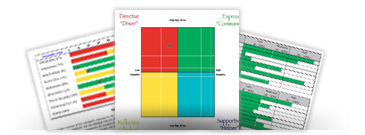Solution Selling: Beyond the Buzzword
Sales trainers love buzzwords. From the ubiquitous “trusted advisor,” to the (thankfully) retired “interfacing,” to the relatively new “challenger sales” and “insight sales,” it seems that there is always some new term that pops up that promises to revolutionize sales and wash the slate clean of the old methods.
A bit of critical thinking reveals that most buzzwords are not describing something new, they are usually just different terms for practices that have been around for a long time and are simply being revitalized or repackaged. They often “conveniently” surface concurrent with the release of a new book or training course, I might add. : )
One such term is “solution selling.” It has been a bit maligned as “just another buzzword” as of late, with some even claiming it is “dead,” which is a shame, since it perfectly describes an effective sales approach. The name has been around in some form for about 40 years, since “solution sales” was used by IBM in the 1970s, but the methodology itself is much older than this.
In solution selling, instead of focusing on the features of a product or service, the salesperson instead brings to light a customer’s business challenge through effective questioning, and then solves it by matching it to a product or service offering.
Whatever you want to call it, this approach simply makes sense, is highly effective and aligns with practically all forms of human problem solving:
- Identify the problem
- Take the steps necessary to fix it using the tools you have available
When a buyer agrees that the tool you have available (your product or service) will solve their problem, and they can afford it, they buy.
Simple.
Getting to that agreement is where the art and science of salesmanship come into play. And that part is not so simple!
How to use solution selling in your business
Regardless of the naysayers, solution selling is alive and well, and more important in today’s economic climate than ever.
Buyers are going online and researching solutions on their own in greater numbers, so when they finally connect with a salesperson, they want a fix to their problem now, now, now. As a result, they get impatient with salespeople who hem and haw instead of presenting an effective solution.
Here’s one very simple example in using solution selling:
- When the prospect voices a business pain, ask “What do you think is causing this?” Use more questions to get a real why that the buyer can agree with.
- In order to get emotional involvement and find the issue with the highest need, ask the buyer a variation of “What will happen to your business and you personally if this situation continues?”
- Present your product or service as the solution to that highest need.
That is it in a nutshell. Very oversimplified of course, but often the simple answers are the ones that work best, and complexity only enters in when people are unable or unwilling to do the basics.
Solution selling is valuable. Call it whatever you like if you feel the name is no longer trendy and cutting edge enough for you, but don’t neglect its principles, as they are very powerful and effective. Contact us here to learn more about how to use solution selling in your business.



